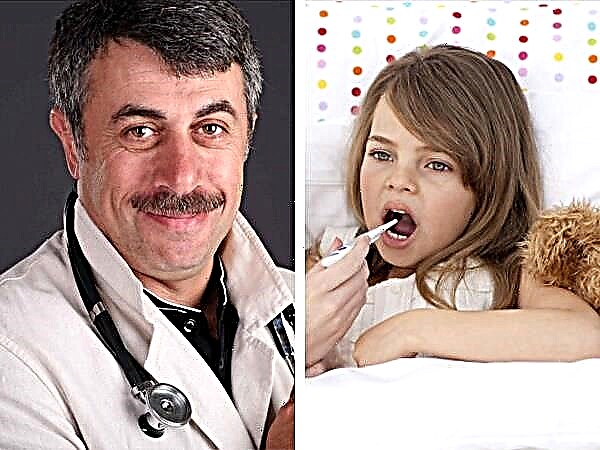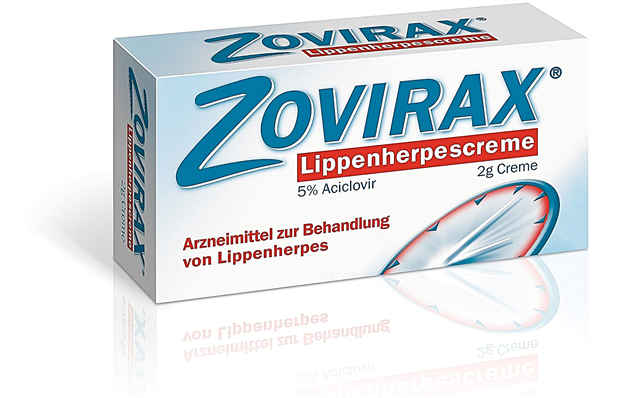Hypotrophy is more common in infants who are deprived of essential nutrients, leading to several clinical problems. It is important to know the causes, symptoms, methods of treatment, prevention in order to be able to control the condition.
It is extremely common to observe malnutrition in children, accompanied by a weak increase in body weight in relation to height and age. When such a lag exceeds 10%, hypotrophy is diagnosed.
Hypotrophy (protein-energy malnutrition (PEM)) is a spectrum of conditions caused by varying levels of protein and calorie deficiencies and is characterized by underweight for height.
Hypostaturation is described as one of the variants of PEM, in which an interrelated deficit of both body weight and height is established.

Etiology
The causes of hypotrophy can be divided into two groups:
- exogenous (associated with external factors);
- endogenous (internal causes).
| Causes of hypotrophy | |
| Exogenous | Endogenous |
| 1. Alimentary factors (associated with nutrition): quantitative deficit and / or qualitative imbalance in the daily menu, violations in the feeding methodology (long breaks between meals, irregular food intake, improper attachment to the breast, aerophagia, etc.). 2. Social factors: pallor, unconventional ideas about age-related nutrition or insufficient food culture of the family, deviant (asocial) behavior of parents, disorders of care. 3. Infectious factor: acute and chronic diseases: severe respiratory infection (adenovirus, influenza, respiratory syncytial, etc.), a group of intestinal infections, pneumonia, acute pyelonephritis, sepsis, HIV infection, etc. 4. Toxic factor: acute and chronic poisoning with household chemicals | 1. Congenital pathology of internal organs: anatomical abnormalities of the gastrointestinal tract: cleft palate and severe variants of the cleft lip, anomalies of the esophagus, pyloric stenosis, Hirschsprung's disease, etc. 2. Pathologies of the central nervous system: trauma at birth, cerebral palsy, hydrocephalus, congenital neuromuscular diseases. 3. Pathologies of the lungs and heart, accompanied by chronic respiratory or heart failure. 4. Disorders of absorption of food components: fermentopathy (celiac disease, hereditary forms of disaccharidase deficiency), cystic fibrosis, etc. 5. Endocrine diseases: hyperparathyroidism, diabetes mellitus, adrenogenital syndrome (hereditary adrenal pathology), etc. 6. Metabolic defects: violation of amino acid metabolism, accumulation diseases (a group of metabolic diseases characterized by excessive accumulation of metabolic products in the body), etc. 7. Severe forms of psychosocial deprivation: autism, early onset of mental illness. |
The mechanism of the onset of the disease and the development of its manifestations (pathogenesis)
In the pathogenesis, the following pathophysiological phases are distinguished:
- 1st phase - hungry excitement. The consumption of reserve reserves of carbohydrates provides the body's energy requirements, the metabolism of amino acids weakens, and the excretion of nitrogen decreases.
- 2nd phase - the phase in which metabolism switches to fat breakdown, basal metabolism decreases, the synthesis of vital proteins is still preserved due to the breakdown of other body proteins.
- The third phase is irreversible: the “internal” protein is cleaved to cover energy goals, changes occur in the structure of mitochondria (organelles that are the energy base of cells) with a violation of their regulatory mechanisms.
Symptoms
Clinical manifestations of malnutrition are grouped into several syndromes.
Syndrome of trophic disorders
Lack of tissue nutrition, which caused structural changes in tissues and cell death:
- flat or negative body mass curve over time;
- underweight, to a lesser extent - body length;
- the proportionality of the physique is disturbed;
- trophic disorders of the skin and skin appendages: decreased elasticity, flabbiness, dryness, with cachexia (extreme exhaustion of the body) - a "pouch" symptom (a narrow mouth opening with deep wrinkles around it), dull nature of nails and hair, alopecia (baldness);
- the subcutaneous fat layer gradually becomes thinner - on the body, abdomen, limbs, face;
- hypotropia of muscles and increasing muscle hypotonia;
- decrease in tissue elasticity.
Syndrome of digestive disorders and impaired food tolerance
- appetite decreases up to anorexia;
- growing dyspeptic disorders - regurgitation, unstable stools, irregular bowel movements, followed by constipation;
- enzymatic and secretory gastrointestinal tract is weakened.

CNS dysfunction syndrome
- emotional tone (screaming, crying) and neuro-reflex excitability are disturbed;
- involuntary muscle contraction;
- hyporeflexia (decreased reflexes);
- lag in psycho-emotional development;
- thermoregulation and sleep are disturbed.
Syndrome of impaired hematopoiesis and immunobiological reactivity
- deficiency of iron and other micro- and macroelements, vitamins (iron deficiency anemia, rickets, etc.);
- frequent infectious and inflammatory diseases, their course is erased and atypical;
- developing toxic-septic conditions, dysbiocenosis of natural microbiological niches;
- signs of secondary immunodeficiency.
Nonspecific resistance is weakened.
Depending on the body weight deficit, three degrees of malnutrition are distinguished: with 1 degree, the deficiency is 11 - 20% of the proper value, with 2 degrees - 21 - 30%, with 3 degrees - a deficiency of more than 30% of the proper body weight. In clinical practice, grade 1 hypotrophy prevails, mainly associated with temporary alimentary disturbances, less often grade II is observed, the development of which is associated with a complex of etiological factors, mainly endogenous. Grade III or cachexia with irreversible organ-systemic consequences and subsequent death is a rare condition.

| Power | Clinical characteristics |
| I | The general condition suffers slightly, the child is restless for periods, greedily takes the breast or nipple; a decrease in the frequency of bowel movements and urination, a slight pallor of the skin, a decrease in subcutaneous fatty tissue is indistinct, mainly in the abdomen. Body weight is reduced by no more than 20% of the proper value. Neuropsychic development (NDP) corresponds to age, food tolerance is not changed. Possible manifestations of stage I rickets, iron deficiency anemia of mild severity. |
| II | Decreased appetite, impaired food tolerance, regurgitation, rare bowel movements or unstable stools. Lagging in CPD: the child does not hold his head well, does not sit, does not stand up, does not walk. During the day, significant fluctuations in body temperature. The subcutaneous fatty tissue is sharply thinned. Deficiency of body weight does not exceed 30% of the proper body weight, body length - 2 - 4 cm. The skin is pale or sallow, dry and peeling. Reduced tissue elasticity. Muscular hypotension. Rickets, iron deficiency anemia, pneumonia, otitis media, pyelonephritis and other diseases, the course is malosymptomatic, atypical. |
| III | A catastrophic situation - general lethargy, there is no interest in the world around, there are no active movements. Suffering facial expression. And in the thermal (irreversible) period, it is indifferent. Thermoregulation is sharply disturbed, the patient quickly cools. The face is "like an old man's", the cheeks are sunken, only fatty deposits remain between the cheek and chewing muscles (Bish's lumps). Body weight deficit of more than 30% of the proper weight, significant growth retardation. Breathing is shallow. Heart sounds are weakened, deaf, bradycardia is present. The abdomen is enlarged, the anterior abdominal wall is thinned. The patient gradually fades away and dies unnoticed, like a “burning candle”. |
Fetal hypotraphy

Fetal hypotrophy is a delay in the intrauterine development of a child.
There are three options for the development of pathology:
- Hypotrophic. There is a malnutrition of all systems and organs, characterized by slow development of the fetus, which does not correspond to the gestational age.
- Hypoplastic. It is characterized by a delay in the maturation of all organs, combined with a lag in the general development of the fetus. It means that at birth, tissues and organs are insufficiently formed and do not fully perform their functions.
- Dysplastic. There is an uneven development of some organs. For example, the liver and heart develop in accordance with the gestational age, while other organs have a maturational lag.
Diagnostics of the malnutrition in children
Diagnostics is based on anthropometry data (a method of measuring the human body and its parts): underweight and slowing growth rates relative to the proper values.
In the analysis of blood, anemia is revealed, with hypotrophy of the 3rd degree - absolute lymphopenia (decrease in lymphocytes), slowing of ESR.
Biochemical research reveals:
- hypoalbuminemia (decrease in albumin, a substance that is an integral part of blood plasma);
- dysproteinemia (imbalance between the fractions of blood proteins);
- hypoglycemia (decreased glucose concentration);
- hypocholesterolemia (decreased cholesterol);
- dyslipilemia (lipid imbalance).
In the analysis of urine - leukocyturia, ketone bodies, excess ammonia. The coprogram shows signs of intestinal digestion disorders.

How is the treatment carried out?
Children with grade 1 malnutrition are treated on an outpatient basis when the social environment is favorable. At 2 - 3 degrees, therapy is carried out only in a hospital setting (first in the intensive care unit, then in the general somatic unit).
All children need a therapeutic and protective regime: adequate sleep in calm conditions, regular ventilation of the room, access to sunlight, wet cleaning twice a day. The temperature in the room is maintained at 25 - 26 ° C. Walks, remedial gymnastics, massage, bathing - daily; the skin and visible mucous membranes are carefully cared for (moisturizing creams, emulsions, vitamin masks).
Diet therapy is the basis of treatment, and is carried out in 3 stages. It is based on the rejuvenation of the diet ("step back"), that is, they use food products that are characteristic of an earlier age group.
When a child is breastfed, it is unacceptable to exclude a drop of breast milk from the diet of a patient with malnutrition.

Organization of diet therapy
| Power | Treatment stages | ||
| Establishing food tolerance | Increasing food loads | Restoring Power Mode | |
| I | On the 1st - 2nd day of treatment, the frequency of feedings is increased by 2 - 3 episodes, the nutrition is calculated for the proper body weight, but the daily amount of food should not exceed 2/3 - 4/5 of the part. It is recommended to use breast milk or specialized formula (mixed feeding), cancel all existing complementary foods. The missing volume is replaced with isotonic saline solutions. | Starting from the 3rd day, the full amount of food is used. The calculation is carried out for the proper body weight, the recalculation is carried out 1 time in 3 days. The basis of nutrition is mother's milk and / or a specialized mixture for patients with malnutrition; complementary foods are gradually and consistently introduced (vegetable puree, cereals; meat, yolk, cottage cheese - from 8 months). | After 3 - 4 weeks, the diet is completely restored, controlling the positive dynamics of weight gain and growth. Then feeding is carried out according to the standard feeding plan. |
| II | Within 5 - 10 days, the calculation of nutrition is carried out: proteins and carbohydrates for approximately the proper (due weight + 20%), fats - for the actual body weight. The frequency of feeding increases by 5 - 10 episodes per day. Breast milk is used, specialized mixtures, complementary foods are canceled. The missing volume is replaced with isotonic saline solutions and glucose. With reduced food tolerance - parenteral (intravenous) nutrition (albumin solution, glucose, fat emulsions). | Calculation of food: 0 - 3 months - 120 - 125 kcal / kg per day; 3 - 6 months - 115 - 120 kcal / kg per knock; 6 - 9 months - 110 - 115 kcal / kg per day; 9 - 12 months - 100 - 110 kcal / kg per day. The frequency of feeding is increased by 2 - 4 episodes per day. Complementary foods are gradually introduced. | Complete restoration of nutrition occurs no earlier than 2 - 3 months from the start of treatment, in the future they adhere to the standard nutrition program. |
| III | The calculation of nutrition is based on the actual body weight, parenteral nutrition, probe nutrition according to an individual schedule, the period for establishing food tolerance is determined by the child's condition. The transition from parenteral to enteral nutrition is slow. Correction of all types of exchange. | The calculation of nutrition is based on approximately the proper body weight, the individual principle of nutrition is preserved, parenteral and enteral nutrition is combined. Complementary foods are introduced consistently and gradually. | The calculation of nutrition is based on the proper body weight, the restoration of the standard nutrition most often occurs not earlier than 6-9 months after the start of treatment. |

In the complex treatment of children, enzymatic replacement therapy is used taking into account the coprogram, as well as vitamin D3, iron preparations, vitamins of group B, C, PP, A and E. To correct the violation of microbiocenosis, probiotic preparations based on bifidobacteria and lactobacilli are prescribed. With 3 degrees of malnutrition, antimycotic agents are used to prevent candidal intestinal lesions.
The use of anabolic drugs is carried out with caution, since, subject to a deficiency of nutrients, their use can lead to profound disturbances in protein and other types of metabolism.
Conclusion
The prognosis is favorable for grade 1 and 2 PEM. With the 3rd degree of malnutrition, despite the ongoing treatment, mortality is 20 - 50% of cases.
Article rating:



